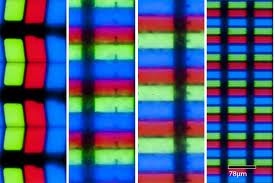
Today, all eyes on the tech world were focused on Apple, who as expected, wowed onlookers with its yearly sneak-peek of what’s to come from Cupertino. And among those announcements came a bombshell for those of us in digital imaging. A major product announcement came in the form of high-resolution, near-print quality image displays that are available beginning right now, on a high-end line of Apple MacBook Pro computers. These Retina displays are boasting 2880 x 1800 pixel densities, at a resolution of 220 pixels per inch, equivalent to some 5.2 megapixels.
By comparison, if you’re reading this on a desktop or laptop, you’re likely seeing it at a resolution of between 72 and 150 pixels per inch, weighing in at a mere 1.2 to 1.8 megapixels.
At the moment, this is only available (at least for desktops and laptops) on a very top level, premium line of systems whose price tags start at $2,200. However, we can expect over the next 12-18 months for these types of displays to become more common on less expensive computers, on all operating systems. And of course, displays of this resolution (and higher) are already available on tablets and mobile devices, such as iPads, iPhones and some high-end Android equivalents.
The immediate impact is that most web-formatted images that are meant to be displayed at the customary 72 ppi, will appear much smaller, and less defined, on these newer screens. This will mean that in order to deliver quality image content to users in the long term, images will have to be larger and more detailed. It’ll be possible for a greater amount of detail from high-resolution digital images to be seen online, instead of having to print these images to get the full effect. Most digital text will be clearer to read. Our computer screens will better approximate print. And hopefully, using a computer to read a document should be a lot easier on users’ eyes.
Fortunately for us at RUcore (and many other digital preservation projects), we’re still well ahead of the curve, with imaging preservation standards that set a baseline of 400 to 600 dpi scanned images. This was originally meant to help us re-create the full print quality of a lot of the documents we scan and preserve, should someone, someday decide to re-print them. But now, it’s clear that computer displays of all types are evolving to catch up with print, and give users an image experience that was never before possible on an electronic screen.
